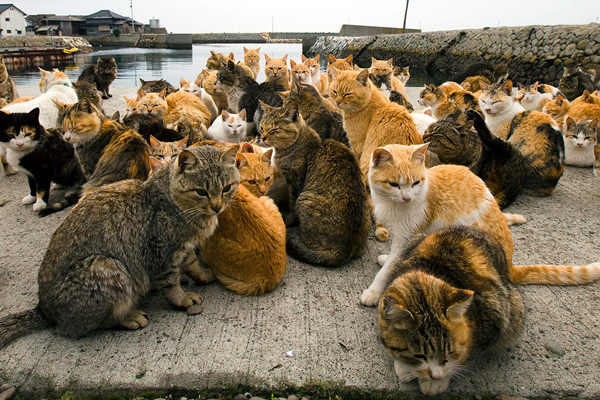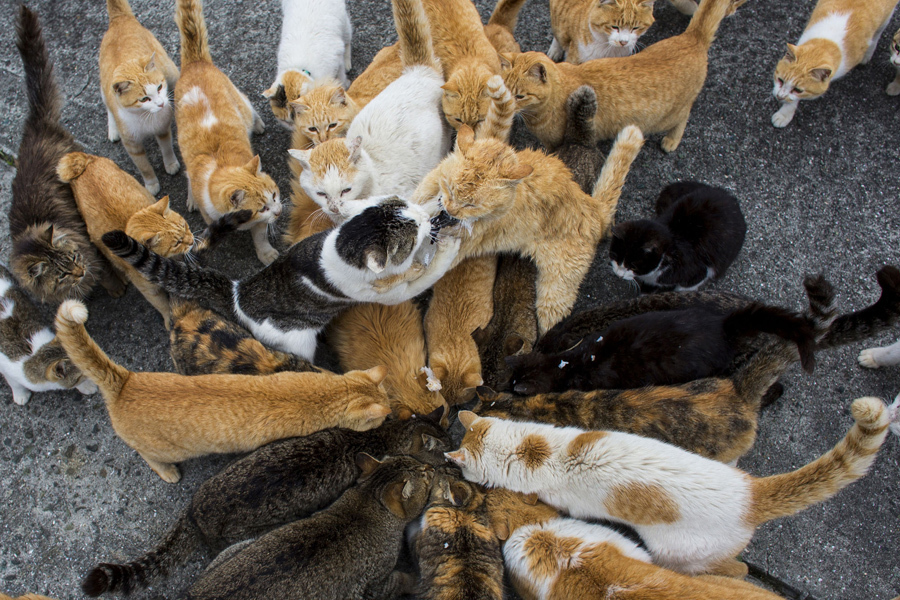
Sunny Japan owns several islands, the number of cats on which exceeded the number of people living there. Such places were called «cat islands»; they became very popular and became a favourite place for travellers and tourists. But is everything so rosy, as they write about it?
At the moment, there are 11 cat islands in Japan, where animal population exceeds the usual number. What is the reason for this phenomenon? In fact, many years ago cats were specially brought to these islands in order to fight with rodents infesting the whole territory. And since it is forbidden to breed dogs, cats are not threatened by any predator, and it is impossible to get out of the island, the population of furry purrs has been growing steadily. It’s no wonder that the tourists are very fond of these places — there are hundreds and thousands of cats!

But recently it turned out that cat islands are a paradise for tourists, but not a paradise for cats. Cat photographer Andrew Marttila and founder of the cat rescue organization Hannah Shaw visited the island of Enoshima, where about 500 cats live. They said that about a third of all animals suffer from various diseases due to overpopulation. «What tourists and cat lovers do not see is that cats and kittens have diseases that should be treated, but there is nobody does it,» says Andrew. The eyes and noses are covered with crusts, the kittens are kept in a trickle on a warm asphalt, — describes Hannah.

The problem is that there are no veterinarians on the island, so cats that breed very quickly are left to themselves. Basically, purrs suffer from respiratory diseases. And here there are very few people and they all refuse to help animals, because they think that nature itself will understand. Another problem is food, which is brought by tourists for cats. Hannah and Andrew noticed that fierce fighting begins between animals because of this.

However, things are so bad not everywhere, for example, on some cat islands, for instance, Tashirojima with a feline population of 3,000 animal units, the authorities catch them, sterilize and treat them, and then release them. But there is still no such thing on Enoshima, but there is hope that such measures will soon be introduced into all 11 islands.